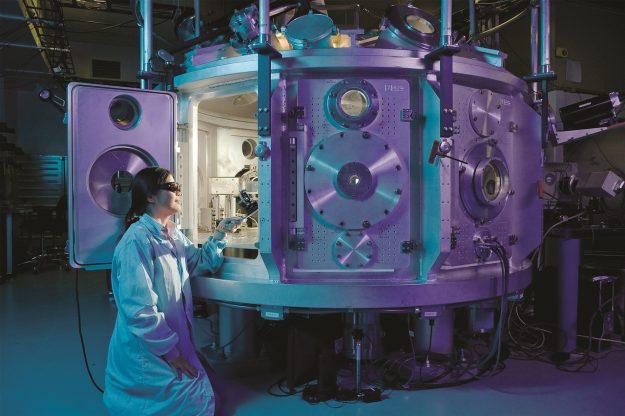Use case: Equipment sharing and co-purchasing

What’s the issue?
Sharing is already a big thing in the digital economy. It can allow individuals and businesses to get more out of their underutilised assets, for example, cars and properties using Uber and Airbnb. Equipment purchased by universities for use in research, teaching or running the campus is often underutilised. This situation could be improved by better coordination of purchasing and sharing.
There is a wide range of benefits to increasing co-purchasing and sharing of equipment, including:
- Cost savings with higher levels of utilisation and shared purchase costs
- Collaboration between colleagues, departments and research groups
- Sharing and improving skills, expertise and knowledge
- Shared maintenance, insurance and consumables costs
- Providing access to equipment that is not normally available
However, there are also a number of barriers to overcome such as:
- Complex charging arrangement
- Lack of clarity regarding responsibility for maintenance or damage
- Training and support not available
- Cultural resistance to sharing – ”this kit belongs to me”
- Increased work due to bureaucracy
- Lack of knowledge about the existence of the equipment
What are the current solutions?
There are a number of initiatives that aim to provide a solution. They exist at a local/institutional, regional, national or even international level.
Institutional
Most universities hold asset registers, databases and inventories. Many have more than one system. A number have developed sophisticated sharing platforms. For example,Cambridge University is a very large institution with a huge range of research equipment that might be available for sharing. It has developed an equipment sharing database with thousands of items listed. This database is linked to similar services in other universities including Oxford, UCL, Imperial and Southampton (See: www.equipment-sharing.cam.ac.uk)
Strathclyde University’s ULAB platform not only facilitates equipment sharing but also incorporates a booking system simplifying the sharing process and making valuable data available. (see: https://www.ulabequipment.com/)
Regional
A number of regional university organisations have equipment sharing initiatives. They generally bring together equipment and facility databases from a number of universities, these include:
- N8 Research Partnership – (8 northern universities) Shared Equipment Inventory System
- GW4 – (Bath, Bristol, Cardiff & Exeter Universities) Equipment Database
- Midlands Innovation – (8 Midlands Universities) Equipment Catalogue
National
Jisc provides the national equipment sharing service “Equipment.Data”. This platform “enables searching across all published UK research equipment databases through one aggregation “portal”, allowing greater accessibility with the aim to improve efficiency and stimulate greater collaboration in the sector.“
Over 50 universities currently contribute their equipment databases to the service. (See: http://equipment.data.ac.uk/)
While very useful, these services are generally only aimed at research equipment. They could be used for all of the equipment on campus including teaching, library, maintenance, estates and catering equipment.

Possible broader solutions
In order to make the most of its equipment purchases universities need to merge the data from a wide range of sources. Currently, this data is spread across the institution with little coordination, these include:
- Insurance equipment databases
- Maintenance schedules
- Purchasing units
- Laboratory inventories
- Research services
- Grant and funding bids
- Procurement plans for all departments
These units will all be holding data on equipment, sometimes the same equipment, but with different data fields. A standard set of data will need to be agreed to harness the possibilities and benefits. Using the Internet of Things (IoT), equipment could even provide and update this data itself, automatically.
Timetabling can be associated with equipment, this is already the case for some high-cost equipment such as specialist laboratory equipment. However, the IoT and the management of increasingly rich data means that increased levels of sharing and co-purchasing becomes possible.
Push notifications services could identify appropriate equipment and current availability in real time. Examples could include sharing digital cameras, printers, scanners, microscopes, vehicles, projectors, sound systems etc. Even the utilisation of estates equipment such as specialist landscaping or building maintenance equipment. However, there needs to be incentives for sharing, high levels of utilisation and to coordinate purchasing across the campus and across departments.
In the future, the use of Blockchain technology could make co-purchasing and sharing of equipment and facilities much simpler and more common. Blockchain, combined with IoT, can help to overcome some of the major barriers that exist such as the issues of trust, cost sharing, location and maintenance scheduling.
While the use of Blockchain technology and the IoT to enable equipment sharing is still in its infancy there are a few examples emergingin other fields.Notably, in Australia, a group of farmers have worked with their bank to co-purchase and share high-value equipment. The equipment was fitted with sensors producing large quantities of data that could help with the provision of an equitable sharing arrangement, as well as optimal performance and maintenance regimes. The participants in this scheme feel that digitised business assets, connected to the IoT and managed with smart contracts and blockchain technology, will become commonplace in the future. (See:CBA’s Smart Assets Experiment).

